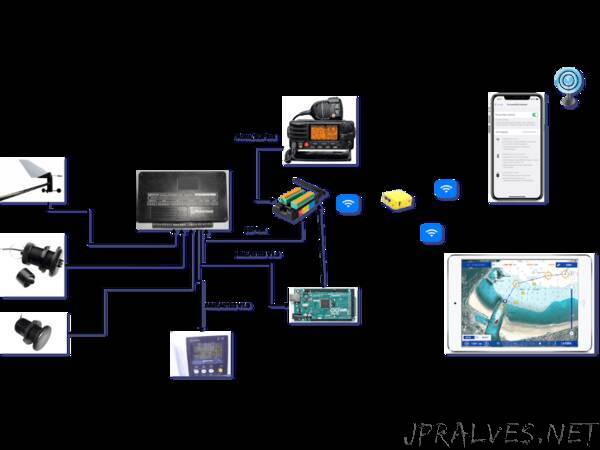
“If you can’t fix it in software you’ll have to fix it in hardware in this case. Hence the NMEAtor.
I’ve an old Robertson data network on board feeding the on board devices with NMEA0183 v1.5. Not only is this RS-232 related, but the NMEA sentences are not terminated with a checksum. Most navigation apps don’t care and checksum checking can be overridden by the user. There is how ever a newer NMEA0183 v2.0 related data stream for GPS and AIS information that needs to be integrated with the old data stream, better known as multiplexing.
I initially went for the easy way out and burned some Euro’s on a commercial multiplexer, which is a great product from YachtDevices; the YDWR02 (4 NMEA inputs and 4 NMEA outputs). It even offers the option to pass through the old V1.5 NMEA0183 data. Unfortunately with this option activated the data can not be filtered out and that is where the problem, well the inconvenience, started. Multiplexing the the 2 data steams results in a frozen HDG at 2 degrees in the navigation app on the iPad. Since this is a given fact, I need to work on the other end of the wire and manipulate the old NMEA0183 data before it is send to the iPad. Fortunately there is a workaround and I can use the equipment, but without the old data stream resulting in only GPS and AIS info ( or all data with a frozen HDG at 2 degrees North)
Since I don’t have a sensor or valid data available telling the magnetic or true heading I decided to integrate an MPU-9250 - GY9250 unit; a 9 DOF thingy with a digital compass, accelerometer and gyroscope.
All this also gives me the opportunity to design a user interface for all the incoming data like a Multi Function Display. Hence the 3, 5” TFT touchscreen.
The Arduino multiplexer project on King Tide Sailing triggered me and here I am. Never soldered a pin on a PCB before and yet there are a lot of them waiting to be soldered like a pro.”
